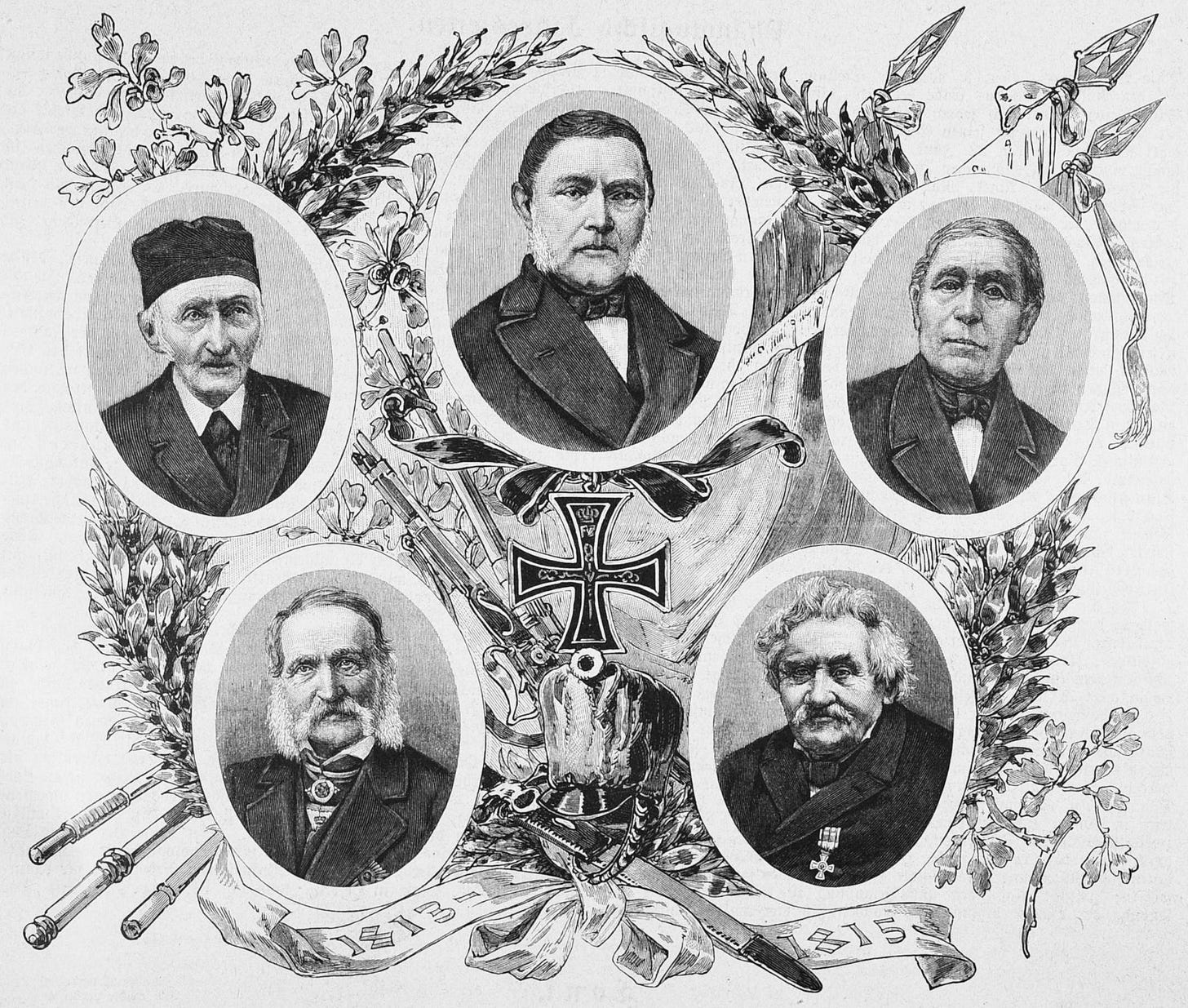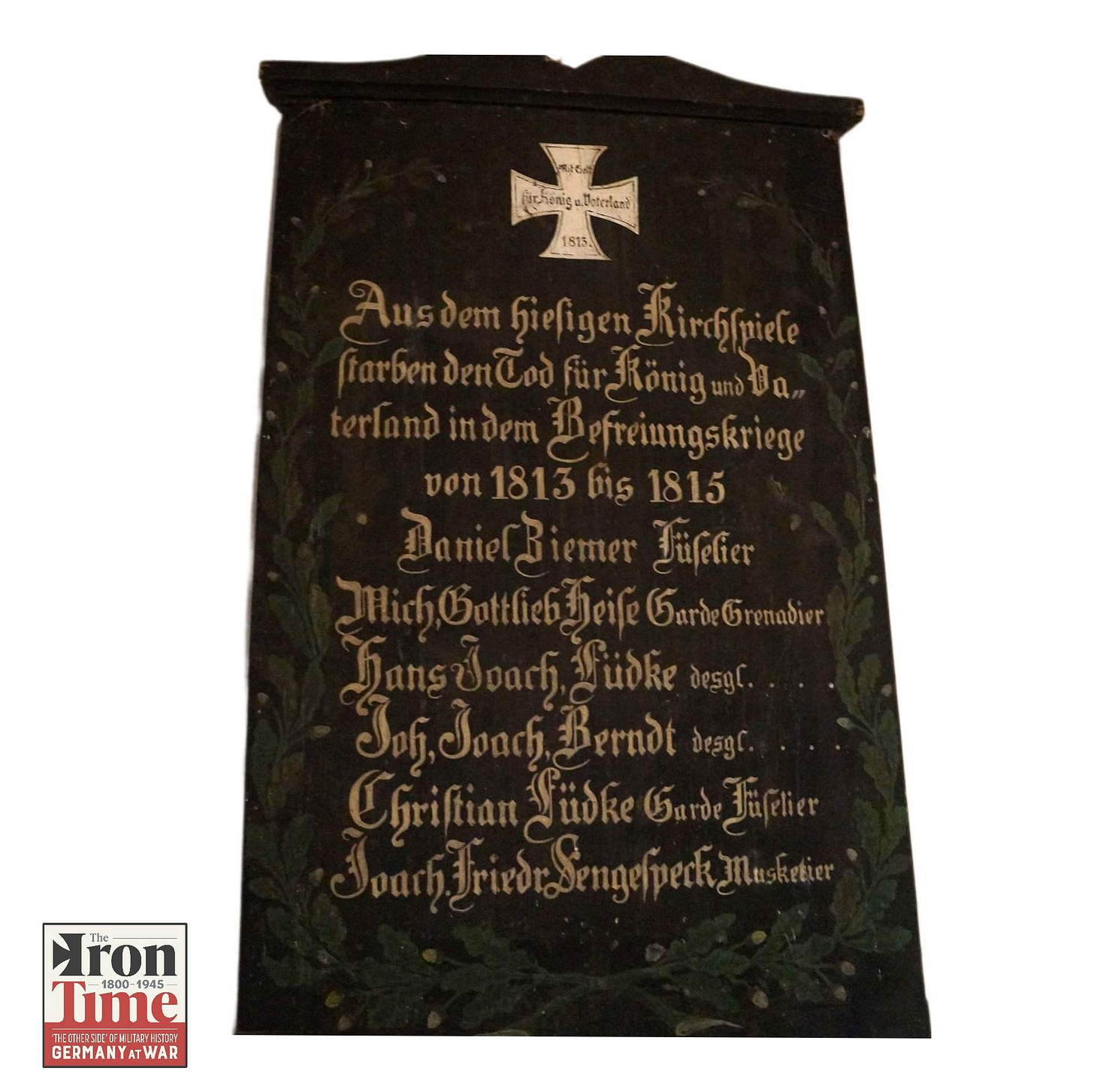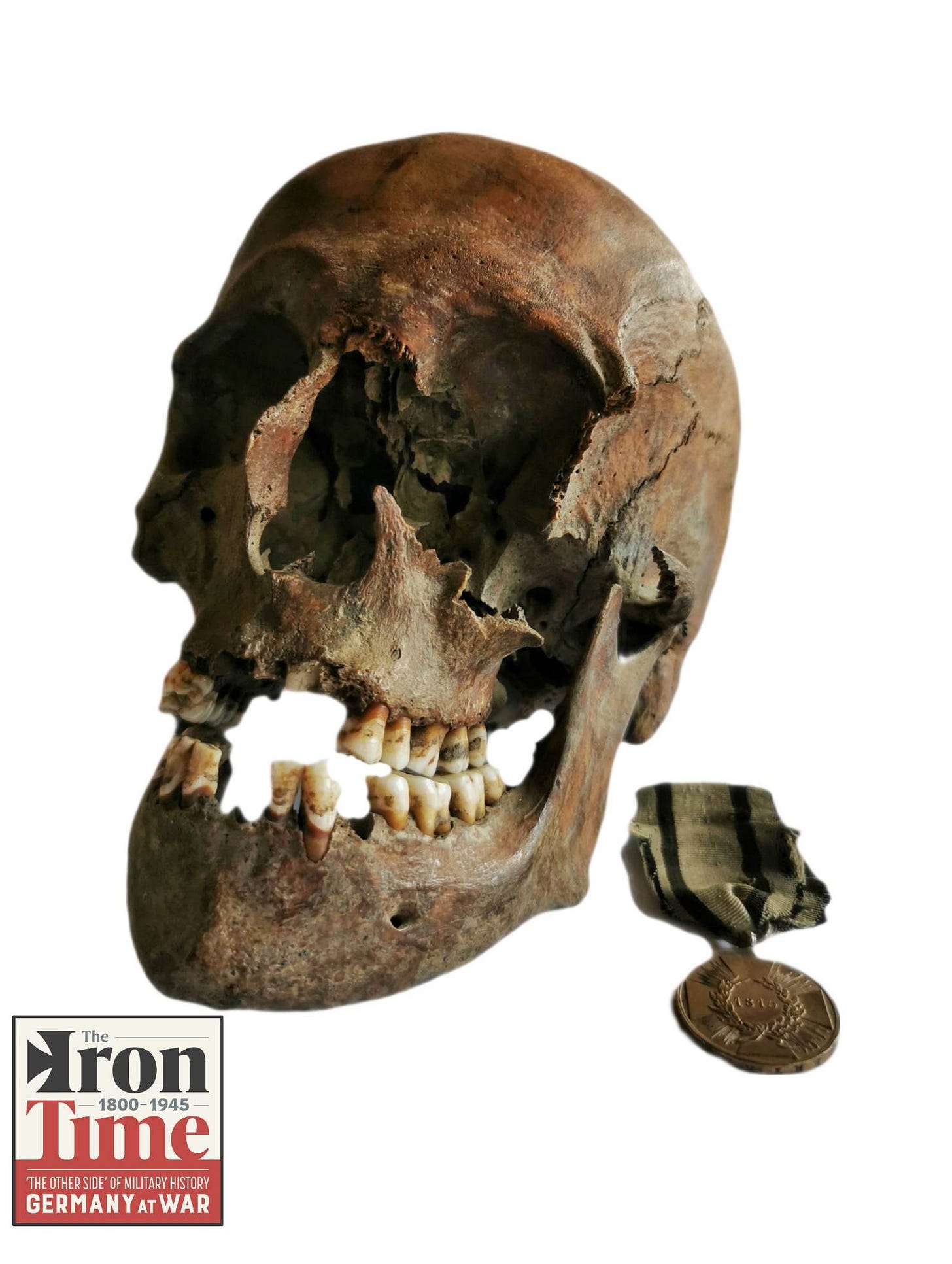SKELETONS IN THE ATTIC: FURTHER THOUGHTS ON THE WATERLOO 'PRUSSIANS'
Today, and I suppose also in the days to come, a lot of noise will be made about the remains of 6 British and 5 Prussian soldiers123, which were discovered and recovered by Dr. Bernard Wilkin and myself, with the kind and valuable support of Mr. Dominique Bosquet (AWaP), in the wake of the first publication of our research on the industrial exploitation of ‘battlefield bone’ in the 19th century456. Most of what there is to say about them will by now have been said in the press and media, but there are a few words which I would like to add.
More than 200 years have passed since these wars ended with the Second Treaty of Paris on 20 November 1815 and I have no doubt that the remains of the British fallen, in their entirety, will find peace in an eternal resting place in the not too distant future. British public interest in this particular battle remains huge and the fallen have a lobby which will speak for them if needed. It is unlikely that they will find their ultimate end in a museum display cabinet, which is what fate had in store for the soldier discovered on the battlefield in 2012 and who has since then been tentatively identified as Friedrich Brandt of the King’s German Legion.
I would love to have that kind of certainty for what we currently identify as Prussian remains and I am sure I worry for no reason, but I am still wondering if we’ll see all of their remains properly laid to rest.

There are several reasons for my concern. Most, like the disinterest of my own people in their more distant past (martial or not), I don’t need to talk about here, but I am aware (having been through a related struggle in 2015) that for some, these are just old bones, not different to those found in mediaeval plaque pits or to a mummified corpse from ancient Egypt. Something to marvel at, not something to emotionally care about. Maybe this is due the fact that the Napoleonic Wars were fought in a manner which today appears alien and antiquated; by rigid formations of gaudily uniformed soldiers driven by drumbeats through acrid, foul-smelling clouds of smoke discharged by black powder cannon and flintlock muskets or by men on horseback, hacking and stabbing with lance and sword. But did it really happen so long ago? Were the men who fought with or against Napoleon so different to us? Or to those who died in the First and Second World War?

If I look into my own family's past, over my father’s shoulder, just two generations form a living and direct connection to the Napoleonic Wars. When his mother, my grandmother, was born in 1918, her grandfather Jakob (born in 1843) was still alive. He in turn was the son of Peter, who had been born in 1783 and had joined the French Army in 1807/08. Peter only returned to his little home village in the Eifel (in what was then Rhenish Prussia) in 1821, then married and named his first two sons Jerome and Joseph, after the brothers of Napoleon Bonaparte. Phrase it that way, instead of simply counting back the number of generations required to follow your family history back into the age of Napoleon, just look at the closest links in your family, and it all appears in a different light.
The remains of the men which were found during construction work at Plancenoit/Maransart in 1982 are particularly important, not only because they are the first Prussian remains to be found on the battlefield, but also because they link directly to the conception and birth of modern Germany. The Wars of Liberation which began in 1813 and ended in 1815, have an enormous significance not only for 19th century Germany, whose territorial shape, including the formation of the nation state, was largely determined by the results of this conflict, but also for contemporary Germany, which still consciously refers to it in its state symbolism. Nevertheless, the German struggle for freedom and independence was initially only outwardly successful, as while it succeeded in shaking off the yoke of Napoleon and his idea of united Europe centred around France, the Congress of Vienna assured that the old forces were able to initiate a return to the status quo ante bellum and to a system of princely rule, dashing the hopes of the young national movements to achieve popular sovereignty. However, the reform processes that were initiated during the period of Napoleonic rule were pioneering, and most impressively in Prussia, which had been reduced to a shadow of its former self. Influenced by the ideas of enlightenment and revolution, the comprehensive Prussian reform policy prepared the ground for a spectacular resurgence in strength and thus for a modernisation that had an effect beyond the victory over Napoleon. Even if the time for the formation of democratic nation state had not yet come the conditions were put in place for internal reforms which would lead to democracy and nationhood. The sovereignty of the nation, freedom and autonomy are the great treasure and heritage of the Wars of Liberation.
The concepts of ‘freedom, honour and fatherland’ gradually led to the formation of a collective German identity and to an emancipation of the common soldier. Military reformers like von Scharnhorst and von Gneisenau were concerned with motivating the male population of Prussia to participate actively in politics as citizens and derive from this new identification the motivation to fulfil their soldierly duty. The subject was to become a free citizen and as such a soldier with rights. The defenders of the fatherland were granted social recognition and promised rewards. Joining the Army was not seen as a punishment anymore. All military awards were done away in this new war for freedom. Instead a new award, the Iron Cross, was to be created for which the award criteria was no longer based on social class and rank, but on individual performance as a symbol of the toils, privations and struggle of the entire nation. For the first time, a Silesian farm hand or a cobbler from Westphalia, could hope to be decorated with the same awards which adorned the chests of officers, nobles and even the King himself. The privilege commemoration, which had so far been held by the nobility and upper classes, was equally done away with by the royal institution of memorial tablets for all, without regard to rank, class or name, for everyone who died honourably in the Wars of Liberation. For the first time, the common soldier had become worthy of public commemoration. On 5 May 1813, only three days after the Prussian defeat at Großgörschen and Lützen, King Frederick Wilhelm III, in an effort to increase the standing of the soldierly class and to motivate his citizens decreed: "Furthermore, for all those who died on the bed of honour, a panel shall be erected in every church at the expense of the parishes, with the inscription: From this parish died for King and Fatherland". Model design plans, probably drawn up by Karl Friedrich Schinkel, the famous architect responsible for the final design execution of the Iron Cross, were sent to all the parishes in the kingdom. The memorial panels were of high rectangular form and executed in the classicist manner with a profiled cornice and a surrounding three-tiered frame adorned with an Iron Cross at the top. Laurel pendants, framed by fruit attached to finials, framed the cross, the dedication and the names of the fallen. The material and size of the panels were optional. Wooden or cast-iron plaques could be purchased. The iron versions were produced and offered in various sizes and price categories by the Königliche Eisengießerei, the Royal Iron Foundry, in Berlin. It was also possible to decorate locally-made wooden panels with purchased cast-iron elements. The panels were to be displayed on the ‘main wall of the church’ and consecrated with ‘appropriate solemnity by the clergy’. Even though not many of these ‘grandfathers of all war memorials for commoners’ survive, some can still be found in parish churches today.

On Christmas day 1813 the King went a step further in an effort to honour all the citizen soldiers of his army by instituting a ‘special commemorative symbol’ from ‘the grateful fatherland’. This took the form of a medal awarded to all combatants who had fought without reproach in the 1813 campaign. A further medal for the forthcoming 1814 campaign was instituted on the same day, as was a version for those who had fought in both years. It was to be awarded in 1814 when: ‘ (…) with God's help - [we] will gloriously conclude the series of deeds and then this honourable commemorative medal will also be awarded this year. Those who fought in both years will also receive the commemorative medal with a double date.’ And indeed, the first campaign medals of the Napoleonic Wars to be awarded to every single combatant were struck from the bronze from captured French cannon and awarded to Prussian troops in occupied Paris in 1814. Many Prussian soldiers who had fought the French Army on the battlefields of Ligny, Waterloo and Wavre, would have worn their 1813/1814 campaign medals on their uniforms. A third model for those who fought in the 1815 campaign was instituted in October that year. With the death of the recipients, the medals were to be returned to their home parishes, where they were put on display not only next to the names of their owners, but also next to the aforementioned memorial panels for the fallen, uniting both groups in perpetual commemoration.


To cut a very long story reasonably short and coming to the point I was trying to make: In stark contrast to the armies of other nations at the time, the fallen of the Prussian army mattered not only to their families and loved ones, but also to their nation. Their names, now lost in time, may well still be visibly commemorated on a panel in a church somewhere in Westphalia, Silesia or Brandenburg. I hope that we will be able to give them the burial, the ceremony and the peace they deserve. Negotiations are ongoing.
The next few weeks will bring more results of the forensic examinations which are currently being conducted at the forensic institute of the University of Liege and in the Natural History Museum in Brussels. In early February a team of HistoryHit.tv headed by the wonderful and ever-supportive Dan Snow, will be granted special access to both sites for filming. By then we maybe have more answers, not only on how these men died, but also on where exactly they came from and where they will ultimately be going.
LAST MINUTE UPDATE: I have been informed that the German War Graves Commission is intending to take care of the Prussian fallen. Will soon update on developments.
More updates to follow; make sure to subscribe to support my work and to stay informed.
https://www.dailymail.co.uk/news/article-11665829/Remains-TEN-Battle-Waterloo-victims-Belgian-homes.html
https://www.faz.net/aktuell/politik/geschichte/schlacht-von-waterloo-forscher-finden-ueberreste-von-zehn-soldaten-18622829.html
https://www.rtbf.be/article/waterloo-des-squelettes-de-soldats-dans-le-grenier-11140004?fbclid=IwAR3yUAZRnAUog_RoxtyXfu3omcLKJWTRd3Dezq_qm7zSnf8FuYuhTm9GnFY
https://www.dailymail.co.uk/news/article-11119607/Battle-Waterloo-dead-used-make-white-sugar.html#comments
https://www.faz.net/aktuell/gesellschaft/schlacht-von-waterloo-raetsel-um-20-000-gefallene-offenbar-geloest-18250827.html
https://www.vrt.be/vrtnws/nl/2022/08/19/waterloo-suiker/






Good to read that the VDK are now engaged
Superb article, Rob.